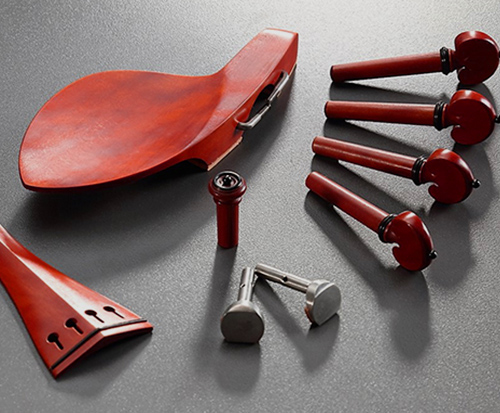When You Should Replace the Violin Fittings Set

The violin fittings set consisting of the tailpiece, pegs, chinrest, and endpin, plays a crucial role in the instrument’s overall performance and playability. Over time, these fittings can wear down or become damaged, affecting the sound quality, tuning stability, and comfort of the violin. In this SEO blog, we will guide you on when to replace your violin fittings set, ensuring that you maintain optimal performance and enjoy the full potential of your instrument.
- Signs of Wear and Damage
Inspecting your violin fittings regularly is essential to identify signs of wear and damage. Look for cracks, chips, or loose parts on the tailpiece, pegs, and chinrest. Pay attention to any issues with the functionality, such as slipping pegs, difficulty in tuning, or discomfort while playing. These are indications that your fittings may need replacement. Additionally, if you notice a decline in sound quality or poor resonance, it may be a sign that your fittings are affecting the instrument’s performance and should be replaced.
- Age and Material Considerations
The age and material of your violin fittings set can also impact their longevity. Different materials have varying degrees of durability. For example, ebony fittings are known for their strength and resistance to wear, while softer woods may deteriorate more quickly. Additionally, older fittings may be more prone to wear due to natural aging and repeated use. Consider the age and material of your fittings when assessing whether they need replacement.
- Changing Preferences and Upgrading
Sometimes, the decision to replace your violin fittings set may not be solely based on wear or damage. As a musician, your playing style and preferences may evolve over time. Upgrading to different fittings can help you achieve a desired tone, improve comfort, or enhance your playing experience. If you feel that your current fittings no longer suit your musical goals, it might be a good time to explore new options and upgrade your violin fittings set.
- Seeking Professional Assessment
If you’re unsure about the condition of your violin fittings set or whether they need replacement, seeking professional assessment is highly recommended. A luthier or violin expert can thoroughly examine your instrument and fittings, providing valuable insights and recommendations. They can assess the structural integrity, functionality, and overall performance of your fittings, helping you make an informed decision about replacement.
Conclusion
Replacing your violin fittings set at the right time is crucial for maintaining optimal performance and preserving the quality of your instrument. By regularly inspecting for signs of wear and damage, considering the age and material of your fittings, and assessing your changing preferences, you can determine when it’s time for replacement. Seeking professional guidance can provide further clarity and ensure that you make the best choice for your violin. By keeping your fittings in excellent condition, you’ll continue to enjoy a well-functioning instrument that produces beautiful tones and supports your musical journey.

Leave a Reply